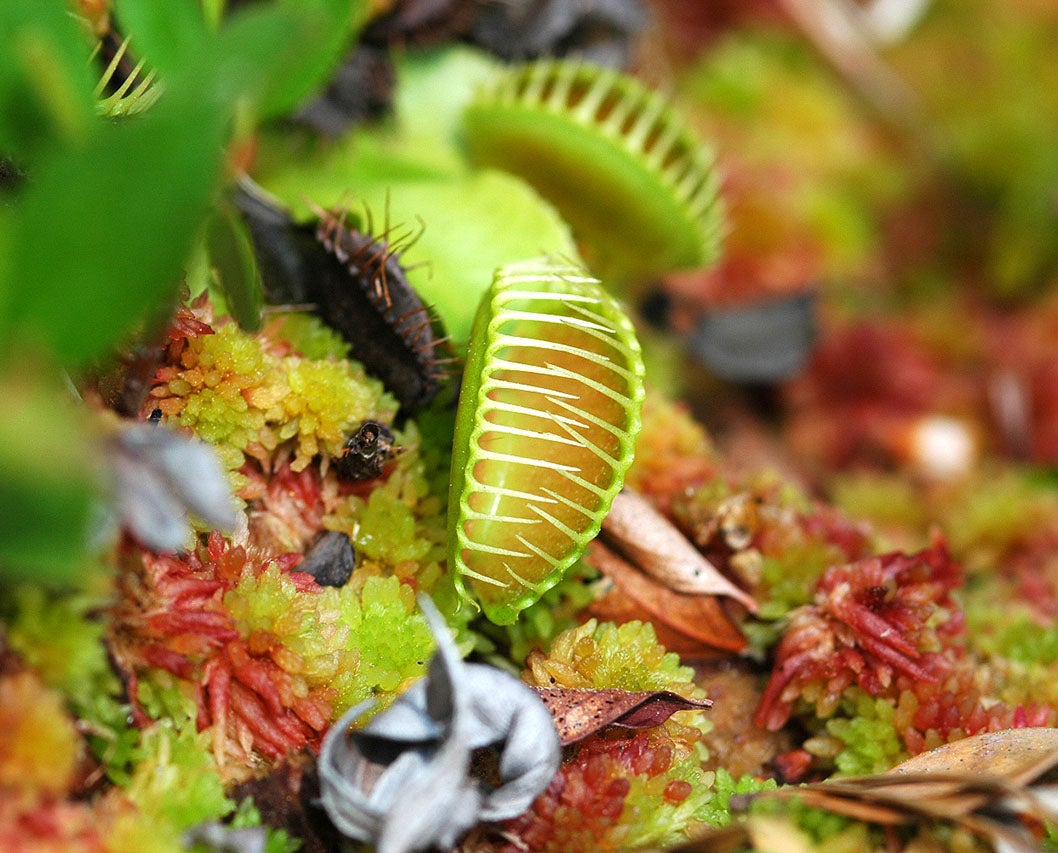Did you know that one of the coolest plants in existence (for now, anyway) is native to South Carolina? The Venus flytrap grows in only two regions in the world, both in the Carolinas: the Sandhills and the Coastal Plain (a 100-mile radius around Wilmington, N.C.). But its numbers are dwindling fast because of poaching, the loss of its habitat due to development and wildfire suppression.
“Given the fact that it has such a tiny population, it’s probably going to go extinct in our lifetime,” says Jean Everett, an expert on the carnivorous plant and a senior lecturer of biology who teaches about it in two CofC botany classes. “I’m very pessimistic. They’re being poorly managed into extinction.”
Everett, who holds a doctorate in forest ecology and botany from North Carolina State University, is hoping that the flytrap goes from “vulnerable” to “endangered” during the next review by the U.S. Fish and Wildlife Service, as the latter designation carries harsher penalties for disturbing the plant or its habitat. But, with the backlog of more than 240 species awaiting protection, it could take more than a few years to get on the endangered list – especially since the Trump Administration has added only 21 species, by far the lowest of any recent president so far into his term.
In her lecture, Everett discusses what makes a plant carnivorous, for which there are specific requirements.
“It has to actually be able to digest what it traps,” she says. “Many plants trap insects in their hairs, but they have no capacity to digest them. It has to get some nutritional benefit from that process. Most plants get almost all the nutrients from the soil, and carnivorous plants live in very infertile, sandy soils.”
The flytrap, which is actually a small perennial herb, developed its meat-eating ways about 48 million years ago as a way to adapt to its environment. According to a 2019 survey, there are just 300,000 of them left in the wild, down from 4.5 million just 40 years ago.
With its red, toothy leaves that trap ants, flies, spiders and other insects, the flytrap fascinates because of its relatively quick snap, the second most extreme of the 500 species of carnivorous plants (there are 23 other species in South Carolina).
“It moves, and it eats meat!” says Everett, when asked what makes the flytrap so intriguing. “They’re just weird and fun. The Venus flytrap is clickbait.”
Photo by Jean Everett




